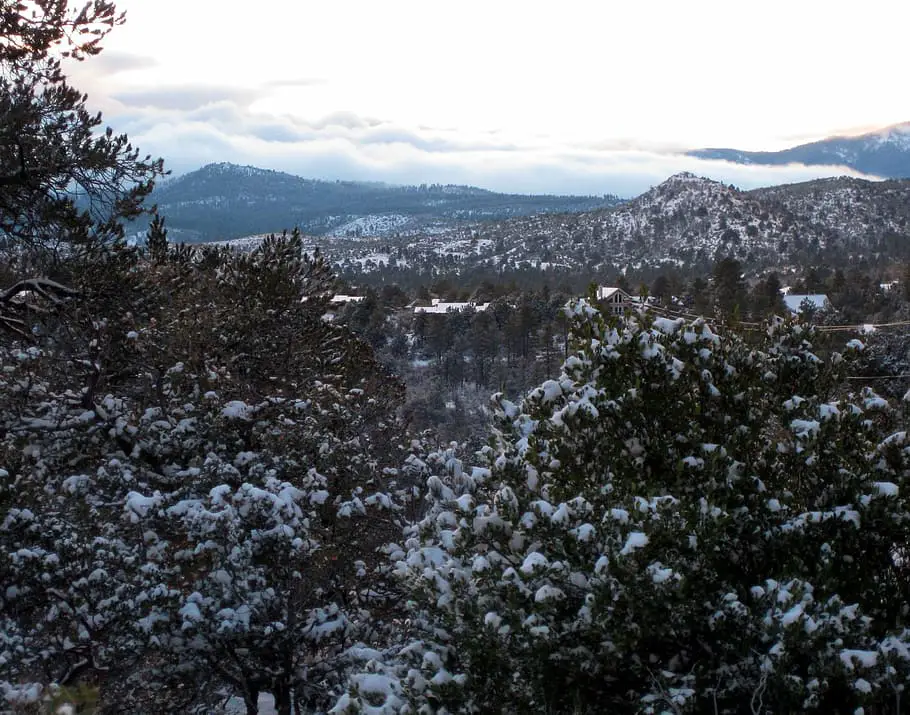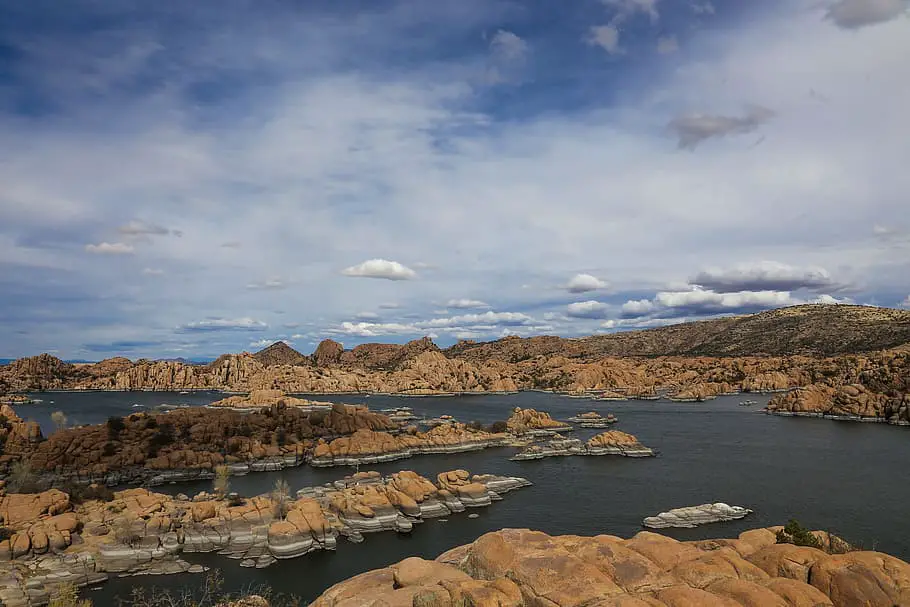Nestled within the vast stretches of Arizona lies a city of rich heritage and stunning natural beauty: Prescott. The historical significance of natural landmarks in Prescott paints a vivid tapestry that intertwines its unique history with its iconic geographies.
This article dives deep into this legacy, offering a comprehensive look into how nature and history are seamlessly blended into this city’s narrative.

Prescott’s landscape, dotted with monumental landmarks, offers more than just aesthetic charm. These landmarks serve as silent witnesses to the epochs of history that shaped the city. They have stood resolute, bearing testimony to the cultural, economic, and political shifts that have defined Prescott’s evolution.
The Earliest Inhabitants
The land of Prescott wasn’t always known by this name. Its earliest inhabitants, the indigenous tribes, revered the territory, marking it with stories and legends. Native American sacred sites in the region hold profound spiritual significance. Many believe these sites are imbued with the spirits of ancestors, making them places of reverence and prayer.
Natural landmarks also played an essential role as ancient gathering spots. These landmarks became arenas of social confluence, where tribes would meet for ceremonies, trade, or deliberations. Such gatherings cemented their bond with the land, rooting their identity deeply within Prescott’s rugged landscape.
The Gold Rush Era
The whispers of gold transformed the serene landscape of Prescott. Prospectors, driven by the allure of fortune, flocked to the city, leaving indelible marks on its landmarks. Navigating the vast stretches of unknown terrains was challenging. However, many landmarks served as invaluable navigational aids, helping miners and settlers orient themselves.
Hidden within the city’s rocky facades were natural caverns, which became the focus of prospecting activities. These caverns whispered tales of ambition, success, and sometimes, despair. Their walls bore witness to the dreams of many who came seeking their fortune in the gold rush.
Granite Dells: The City’s Geologic Marvel
The Granite Dells, with their peculiar rock formations, stand as one of Prescott’s natural jewels. Geologists believe that the Dells’ formations are a result of weathered granite shaped over eons, creating a picturesque mosaic of rock and water.
Historical events at the Dells revolve around its natural bounty. Its lakes and rivers provided sustenance to early settlers, and its majestic landscape inspired countless artists and poets.

Thumb Butte: Prescott’s Iconic Landmark
Towering over Prescott is Thumb Butte, a testament to nature’s architectural prowess. The indigenous tribes spun legends around it, attributing its unique shape to celestial beings or monumental battles of the past.
As settlers ventured westward, Thumb Butte’s distinct silhouette became a navigational beacon. Its prominence in the landscape made it an unmistakable reference point, guiding weary travelers and serving as a backdrop for countless tales.
Lynx Creek: A Stream of Stories
The shimmering waters of Lynx Creek have many tales to tell. In its early days, the creek was a hotspot for gold panning, with prospectors eager to extract its hidden treasures. Settlements burgeoned around Lynx Creek, primarily due to its life-giving properties.
The creek’s fertile banks and abundant water turned barren lands into thriving hubs of activity, shaping the cultural and economic trajectory of Prescott.
The Watson Lake Reservoir and Dam
With a vision for the future, Prescott’s leaders conceived and created Watson Lake. This man-made marvel transformed Prescott’s landscape, ensuring a stable water supply and opening avenues for recreation. The dam played a pivotal role in Prescott’s growth.
It attracted settlers, businesses, and eventually, tourism, converting a simple water reservoir into a hive of human activity.
Hassayampa River Preserve: Biodiversity’s Bastion
The Hassayampa River winds its way through Prescott, nurturing a vast array of flora and fauna. Historians suggest that its banks witnessed brisk trade in the early days, with traders using the river as a natural highway.
Its role as a trade route not only boosted Prescott’s economy but also fostered cultural exchange. The river became a melting pot of ideas, traditions, and goods, shaping the city’s unique cultural tapestry.
The Prescott National Forest
Spanning vast acres, the Prescott National Forest is a testament to nature’s splendor. Its inception was rooted in the need for preservation. Early conservationists realized the forest’s significance and rallied to protect its pristine beauty.
The forest, besides being a refuge for wildlife, played a pivotal role in history. It witnessed lumber trades, provided resources during wartime, and hosted countless explorers seeking solace in its tranquil embrace.
Montezuma Castle: A Window to the Past
An architectural marvel carved into the cliffs, Montezuma Castle stands as a tribute to the Sinagua people’s ingenuity. This ancient dwelling offers a snapshot of life several centuries ago, reflecting the daily routines, challenges, and aspirations of its inhabitants.
While not directly in Prescott, its proximity and significance have influenced regional history, education, and tourism. Over time, concerted efforts have been made to preserve this relic, ensuring future generations can marvel at this testament to human endurance and creativity.

Mingus Mountain: An Overlook to History
Mingus Mountain, standing tall, has seen Prescott evolve from an indigenous homeland to a bustling city. The folklore surrounding the mountain speaks of spirits, celestial events, and deep-rooted traditions.
With the logging industry’s emergence, Mingus Mountain became a focal point of economic activity. Its dense woods supplied timber, driving Prescott’s growth and laying the foundations for future industries.
Trails and Paths: The Footprints of Time
Prescott’s myriad trails are more than just pathways; they are historic routes. Native Americans and early settlers used them for trade, migration, and exploration, creating a network that interconnected various communities.
Modern-day trails, such as the Peavine Trail, often retrace these historic routes. Walking them, one can almost hear the whispers of the past, each step echoing with stories of ambition, conflict, and harmony.
The Role of Landmarks in Cultural Festivities
Prescott’s landmarks have always been more than static entities; they’re living, breathing spaces. Many cultural festivities are rooted in the city’s natural beauty, drawing inspiration from its picturesque landscapes.
Landmarks like the Dells or Thumb Butte serve as venues for community celebrations. Be it art festivals, musical gatherings, or nature walks, these landmarks infuse every event with a touch of Prescott’s rich heritage.
Preserving the Landmarks: Modern Efforts
With time, there’s been a growing realization of the importance of preserving Prescott’s landmarks. Organizations like the Sharlot Hall Museum and local preservation committees have worked tirelessly to maintain the city’s historical integrity.
Their impact is palpable, not just in the physical restoration of sites but also in the dissemination of knowledge. They’ve been instrumental in educating both locals and tourists about the importance of these landmarks.
Balancing tourism with conservation has been a tightrope walk. While landmarks attract countless visitors each year, ensuring that their historical and natural essence isn’t eroded by human interference remains paramount. Initiatives such as guided tours, eco-friendly accommodations, and community-driven preservation projects reflect the commitment of Prescott’s inhabitants to safeguard their heritage.
Natural Landmarks as Symbols of Identity
For Prescott’s denizens, the natural landmarks are more than mere geographical entities; they’re a part of their identity. Over generations, artists have captured the majesty of the Granite Dells in paintings, poets have penned verses extolling the beauty of Lynx Creek, and musicians have composed ballads inspired by the serenity of the Prescott National Forest.

These expressions reinforce the community’s deep-seated bond with the landmarks. They are not just places to visit but symbols of home, history, and belonging.
Frequently Asked Questions:
In this section, we will be delving into some of the most common inquiries and curiosities that surround our topic.
What are the oldest landmarks in Prescott?
While Prescott boasts numerous ancient sites, some of the oldest include areas revered by indigenous tribes, such as sacred sites and ancient gathering spots. Additionally, geological marvels like Granite Dells have been shaped over eons, bearing witness to countless epochs.
How have the natural landmarks influenced Prescott’s development?
Landmarks like Lynx Creek were pivotal to gold panning activities, leading to settlements. Other sites like Watson Lake bolstered economic growth, attracting businesses and tourism. Natural landmarks also shaped the cultural, recreational, and social aspects of Prescott.
What role do these landmarks play in modern Prescott?
Besides being popular tourist attractions, these landmarks are venues for cultural events, community gatherings, and environmental education. They continue to inspire artists and play a significant role in local festivities.
Are there ongoing preservation projects for these landmarks?
Absolutely. Numerous organizations and community-driven initiatives are dedicated to preserving Prescott’s landmarks. They focus on restoration, conservation, and spreading awareness about the importance of these sites.
How can tourists responsibly visit and appreciate these landmarks?
Tourists are encouraged to follow ‘Leave No Trace principles, participate in guided tours, respect restricted areas, and support local preservation efforts. Staying informed and being conscious of one’s environmental footprint goes a long way.
Conclusion: Historical significance of natural landmarks in Prescott
In the grand tapestry of Prescott’s history, natural landmarks aren’t just the backdrop; they’re the threads that weave together tales of yore and contemporary narratives. Each rock, river, and ridge holds a story, waiting to be discovered.
Whether it’s the sacred sites that whisper ancient prayers or the modern trails that echo with laughter and conversations, Prescott’s landmarks stand as pillars of the past, present, and a hopeful future. Their silent presence serves as a gentle reminder of our interconnectedness with nature and our responsibility to cherish and protect this shared heritage.



Leave a Comment
You must be logged in to post a comment.